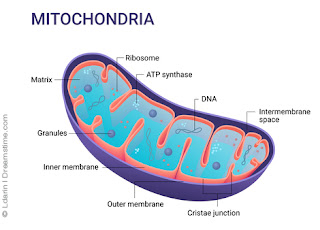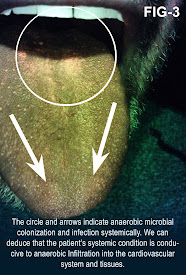Our next tour in our search for non-invasive health innovations is the science of BIOFEEDBACK—and we start our review with the internationally recognized pioneers from ONDAMED. Uniquely integrated with the features of PEMF/Pulsed Electromagnetic Field Therapeutics, this device offers localized tissue stimulation by induction of microcirculation within tissue. While the ONDAMED is approved by health authorities outside of the U.S. for pain relief, soft tissue injuries, and wound healing, the U.S. FDA regulates health claims to only include treatment for stress and stress related disorders.
An historically recognized electronic device earned its mark in progressive wellness, muscle relaxation and the alleviation of functional medical disorders (Jacobson/Harvard, 1938)- and evolved into the core of self-regulating therapeutics. In the early 1920's, a community of researchers founded the biometric readings as part of the early works of EEG, visceral learning & electromyography as the major functions of the biofeedback paradigm. EEG studies the basic principle that brain processes can be brought under voluntary control. Pursuit of the meditative, alpha dominant states continues to be part of today's EEG neurofeedback movement- supporting applications of brain wave control and the therapeutic signal of the device.[1]
- ELECTROMYOGRAPH (EMG): measures muscle fibers & neuromuscular studies. Neurofeedback may sometimes be used as a non-invasive treatment for ADHD, pain, addiction, anxiety, depression, and other disorders. [2]
- THERMAL FEEDBACK: reads migraine headaches & Raynaud's disease
- GALVANIC SKIN RESPONSE METER (GSR): measures electrical changes in the skin (sympathetic nervous arousal) supportive of psychotherapy & behavior therapy to track anxiety and cognitive/emotional threat response
According to Rolf Binder, chief engineer/inventor of the ONDAMED device and owner of the Ondamed Companies, and Dr. Silvia Binder, CEO of the Ondamed Companies, biofeedback is a mind-body process of electronic signals designed to send-then-receive (feedback) information about a person's physiological state, aimed at restoring control over involuntary bodily functions such as heart rate, muscle tension, blood flow, pain perception, and blood pressure. The (diagnostic) device sensors acquire feedback about specific aspects of your body. Once that information arrives, the goal of the device is to make subtle changes to the body that results in the desired effect. This might include relaxing certain muscles, slowing heart rate or respiration, or reducing feelings of pain. By doing this, people are often able to improve their physical, emotional, and mental health. For example, biofeedback can also be used to help people better manage the symptoms of a condition including insomnia, anxiety, depression, and pain.
The Association for Applied Psychophysiology and Biofeedback defines biofeedback as a process that allows people to alter their physiological activity in order to improve health or performance. Utilizing precise measurement instruments, information about the body's functions are provided to the user. [2]
BIOFEEDBACK THERAPY (e.g., ONDAMED) stimulates the body with gentle focused pulsed electromagnetic fields/PEMF in stressed areas that the biofeedback 'reports' to need help. This therapy is especially helpful to balance parasympathetic and sympathetic nervous systems, impacting the psyche, immune system, and endocrine system.
HOW DOES IT WORK: The biofeedback sensors "learn" about your specific physical signs and symptoms of stress and anxiety (ie. increased heart rate, body temperature, and muscle tension) through electrical sensors that are connected to specific areas of your body. During your session, your therapist will guide you through different mental exercises that may involve visualization, meditation, breathing, or relaxation techniques. The ONDAMED Biofeedback System combines stimulation of gentle focused pulsed electromagnetic fields with Biofeedback. The feedback from the patient is done by monitoring the pulse rate and SpO2 displayed on the device. In addition, the practitioner palpates the patient’s radial pulse (aka vascular signal). This method allows personalizing stimulation of frequencies and sound along with placing applicators on most reactive stressed areas on the body for the patient’s fastest and lasting recovery.
 "The ONDAMED device is an intelligent approach to providing stimulation with your body’s own communication language, which is electromagnetic. The brilliance of the ONDAMED method is the personalization of targeted localized frequency stimulation raising awareness to the patient to overcome stress and stress-related disorders."
"The ONDAMED device is an intelligent approach to providing stimulation with your body’s own communication language, which is electromagnetic. The brilliance of the ONDAMED method is the personalization of targeted localized frequency stimulation raising awareness to the patient to overcome stress and stress-related disorders."
|
"The ONDAMED device is an intelligent approach to providing stimulation with the body’s own communication language, which is electromagnetic. It’s not just going by symptoms or pathology or by what one knows about one frequency, but rather it is about combining a physical stimulation with biofeedback to personalize healthcare. Connecting with the patient by palpating the patient’s radial pulse while she/he receives ONDAMED’s therapeutic stimulation will give us the information as to what frequencies and where on the body these frequencies are needed most. It is overriding what we know or don’t know about the patient’s life health story. This method is comparable to a lie detector; we are accessing the individual’s innate wisdom by tapping into their communication pathways, and perhaps into part of their subconscious. Within minutes, the applicators can be placed on select areas for treatment. With biofeedback, we make the patient aware of what it is that they respond to—and where it is on the body that they need treatment. The patient’s autonomic nervous system is teaching the patient about their state of mind, their emotions, and biological consequences; this is all occurring while therapy is already running." - Dr. Silvia Binder |
• 3/24 - Electromagnetic Breakthrough from Above our Northern Border: By Joseph J. Toy
• 3/16 - Essentials of SHOCKWAVE THERAPY: feat. Uran Berisha (IloveShockwave.com)
• 3/7 - Personalized Nutrition: Going beyond VitaminB12 for Vegan Diet Support: By: Dr. Bobbi Kline
• 3/7 - Integreative Medicine Review of Toxins
• 3/7 - The Sitting Culture: High Risk of Decline and Mortality: by Dr. Jonathan Kirschner
• 2/24 - Can PEMF Speed Up Healing Time? - by Dr. Jerry Dreessen
• 2/23 - Mental Health 101: Treating Incontinence Starts with Overcoming the STIGMA: by Dr. Bobbi Kline
REFERENCES:
1) Biofeedback, Mind-Body Medicine, and the Higher Limits of Human Nature: https://www.aapb.org/i4a/pages/index.cfm?pageID=3383
2) https://www.ondamed.net/en/ondamed-biofeedback
Disclaimer & Copyright Notice: The materials provided on this website are copyrighted and the intellectual property of the publishers/producers (The NY Cancer Resource Alliance/IntermediaWorx inc., The AngioFoundation and Bard Diagnostic Research & Educational Programs). It is provided publicly strictly for informational purposes within non-commercial use and not for purposes of resale, distribution, public display or performance. Unless otherwise indicated on this web based page, sharing, re-posting, re-publishing of this work is strictly prohibited without due permission from the publishers. Also, certain content may be licensed from third-parties. The licenses for some of this Content may contain additional terms. When such Content licenses contain additional terms, we will make these terms available to you on those pages (which his incorporated herein by reference).The publishers/producers of this site and its contents such as videos, graphics, text, and other materials published are not intended to be a substitute for professional medical advice, diagnosis, or treatment. For any questions you may have regarding a medical condition, please always seek the advice of your physician or a qualified health provider. Do not postpone or disregard any professional medical advice over something you may have seen or read on this website. If you think you may have a medical emergency, call your doctor or 9-1-1 immediately. This website does not support, endorse or recommend any specific products, tests, physicians, procedures, treatment opinions or other information that may be mentioned on this site. Referencing any content or information seen or published in this website or shared by other visitors of this website is solely at your own risk. The publishers/producers of this Internet web site reserves the right, at its sole discretion, to modify, disable access to, or discontinue, temporarily or permanently, all or any part of this Internet web site or any information contained thereon without liability or notice to you.

































